In Gifu prefecture 岐阜県 when taking a dan 段 level examination for kendo 剣道, one of the components is a written test. The Gifu Kendo Federation provides a book which details all the questions and answers they use for this test.
I will take the test in November, and unfortunately for me, it's all in Japanese. So, I translated the book into English, and then made a few edits with a kendo dictionary after.
Currently, this is a work in progress. I've completely translated the first 3 parts. But for the 4th part of the book, I only translated the shodan 初段 level questions for now. I'll do the rest after November.
You can download my translation and take a look for yourselves, at the following link:
gdocs/ 剣道学科審査問題集 Kendo Exam Question Workbook - WOP-2014-09-11.pdf
It's a PDF. Also, the size of the paper is a Japanese B4 size, which is 257 mm (10.12 in) by 364 mm (14.33 in), and it's currently 18 pages.
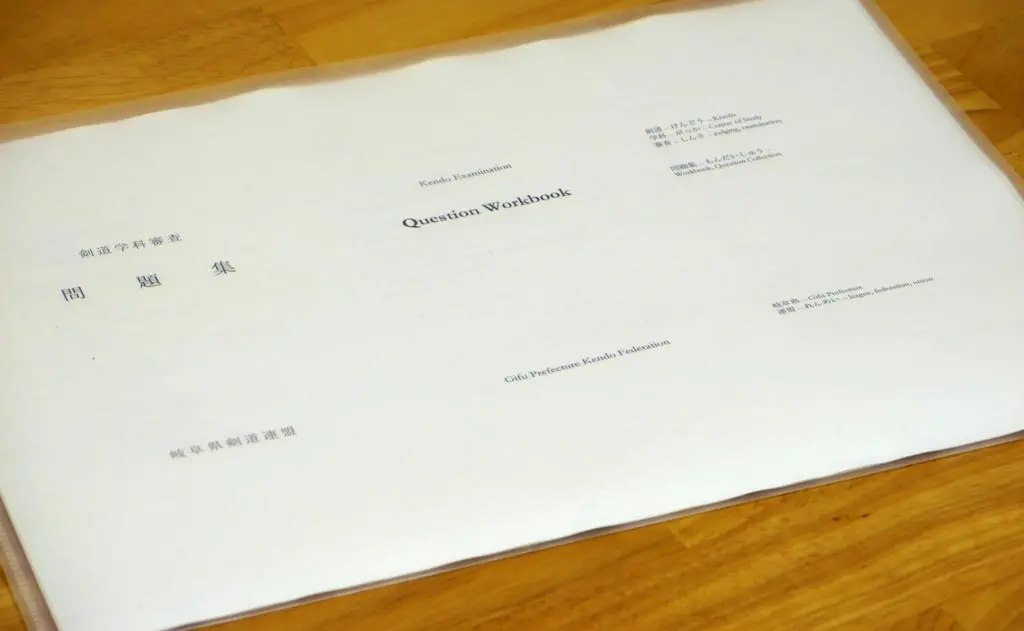
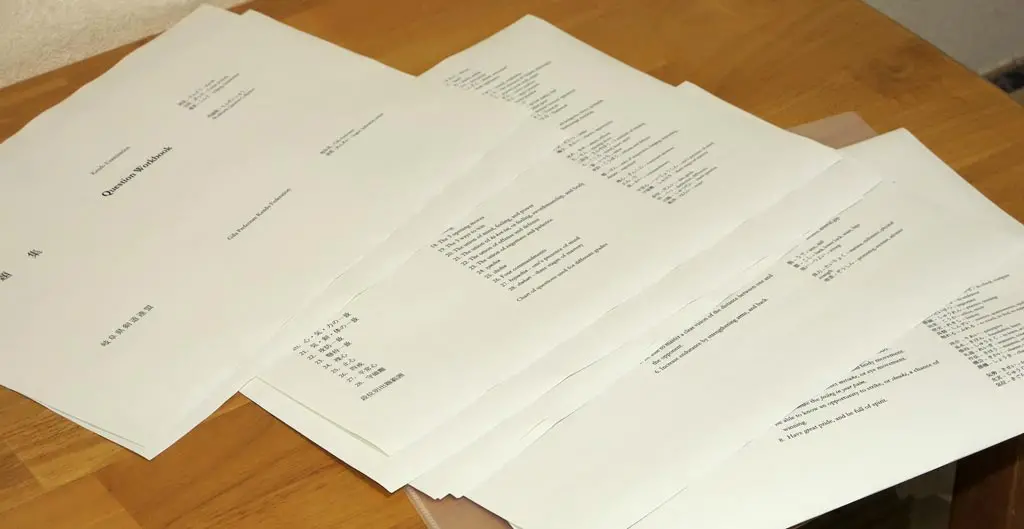
Kendo is one of the oldest forms of martial arts in Japan. It literally translates as "way of the sword," and across Japan tens of thousands, hundreds of thousands of elementary, junior high, high school, college students, and regular citizens practice or have practiced Kendo at some point in their life.
I began practicing Kendo in April 2013 when the junior high school I taught at continued to ask me to join them in their practices. It's been great exercise, great stress relief, and I've met so many people throughout the community through this sport.
Much like every martial art, Kendo has an idea of ranking, similar to the black belt system in Karate. Kendo has two levels of mastery, Kyuu 級, and Dan 段. To achieve these ranks, you must take an exam. And in Gifu prefecture 岐阜県, these exams are proctored by the Gifu-ken Kendo Association. They visit the Takayama area 4 times a year.
The first level, kyuu 級, builds up from higher number to lower. So, 1-kyuu 一級 is the highest rank on the kyuu scale. From there, the next level is dan 段, in which numbers increase.
You gotta start somewhere. If you're a junior high school student, or older, when taking the test for the first time, the requirements are similar to the 1-kyuu 一級 test. Afterward, the judges will assign a grade to you.
I took the unranked exam in November last year. My exam had two parts. I had to perform all 9 waza for kihon-waza with a bukkuto. Then needed to perform a series of moves attacking an opponent.
Kihon-waza are a series of movements in kendo that are practiced slowly and methodically. This series are some of the most basic moves you can perform within a kendo match. Performing them in this way teaches correct posture, body movement, foot movement, and shinai movement.
Here's a youtube clip of the waza being performed:
https://www.youtube.com/watch?v=aj6V_sT2dnQ
Additionally, you must perform some moves in realtime against an opponent. For unranked, I had to perform kiri-kaeshi, men-no-uchi, kote-men-no-uchi, men-kaeshi-dou, and men-suriage-men.
I messed up the men-suriage-men. They blamed it on my opponent, though, and let me try again. Again, I messed it up, so they realized it was my fault not his.
But overall, I was awarded 2-kyuu 二級!
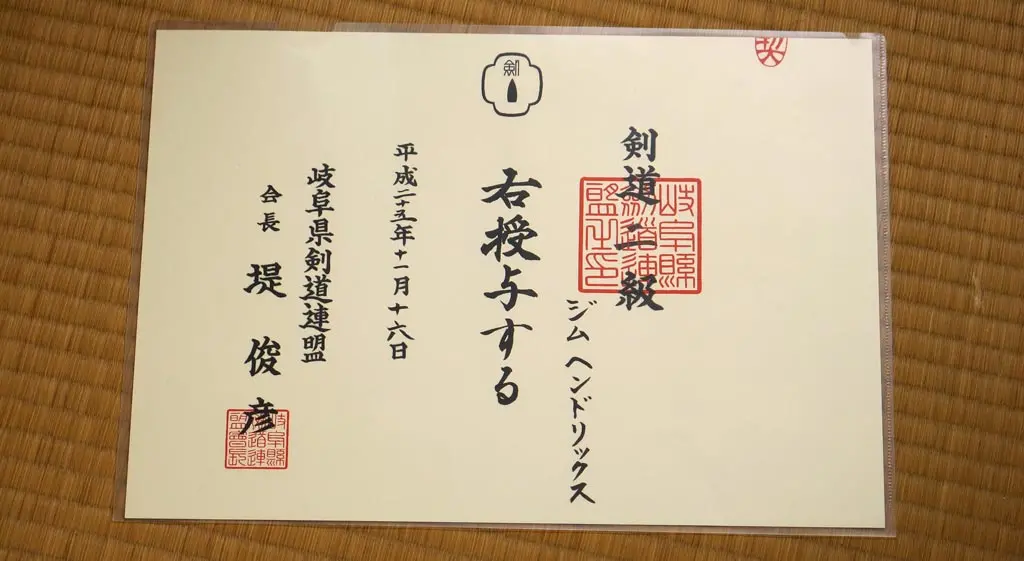
This put me on the same level as the 5th grade elementary students I practiced with each week. Actually, many of my students were taking the exam as well, and got 2-kyuu, too!
In June this year, I took the 1-kyuu exam. This test had 3 parts. It had the same 2 parts from the unranked tests: the kihon-waza, and the series of real-time moves. In addition, I also had to take part in an example shiai, or match.
Within the match, I had to demonstrate how I attack and strike my opponent, and show as much variety as possible. I didn't need to win, or get as many valid strikes as possible. I just need to demonstrate I knew how to initiate attacks, reacts to incoming attacks, and that all my movements were in sync.
I think I was a little stiff in some actions, but my mind was 100% centered on the moves I was performing, and what was happening within the match. I tuned out everything around me, and forgot about the world. It was only my opponent and myself that existed. It may have been the first time I actually felt this way. Usually, I'm very conscious of instruction, and how I look performing these moves, but I couldn't focus on that. I pushed it all out of my mind.
I did all this MAINLY because I was the last person to do this test. They put me in the back because I was so tall and couldn't "measure" to the other test takers. So, no one else was in line behind me. Everyone else had already finished. I was the only one on the floor, and all the other participants, families, judges, and whomever else were all watching me. Maybe 200 people?
I do get a little stage fright in front of so many people, but this is compounded. Everyone is Japanese. I'm the only white guy here. I stand out quite a bit (literally). And I'm the only white guy, in the history of Takayama (possibly in all Gifu), to do Kendo and take these tests. The nervousness of failing or succeeding or looking dumb or just looking anything was just too great because it felt like I was representing more than just myself.
So I had to tune it out. Which is what I should being doing a match in the first place.
And my concentration paid off. I achieved the rank of 1-kyuu! Along with all my students, both elementary and junior high. :D
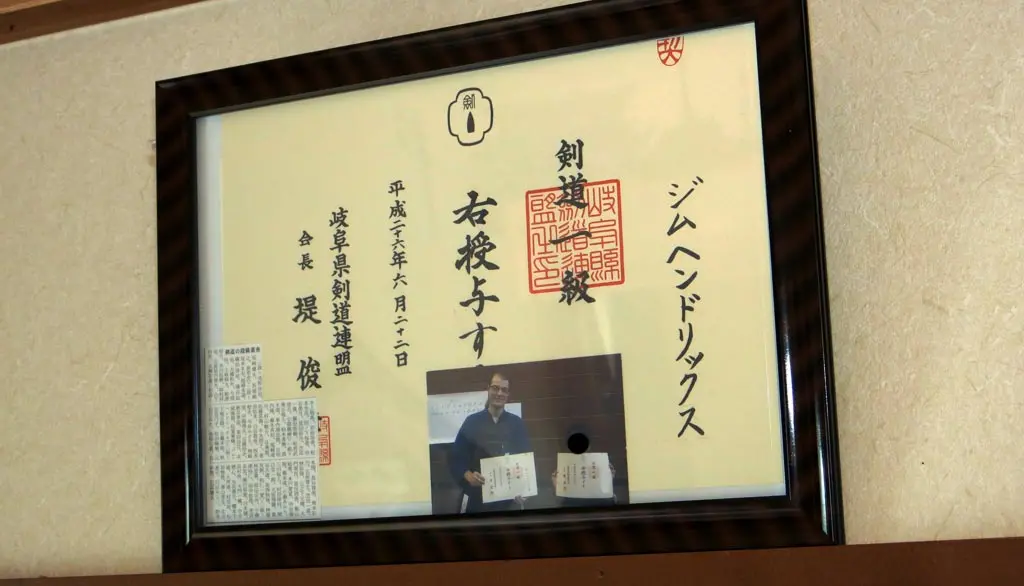
Having mastered kyuu, the next level of mastery of dan. The first level is shodan 初段. The requirements for shodan are completely different than that of kyuu. There are 3 parts.
There's a new set of waza that must be learned. These are Nippon Kendo Kata. For shodan, only the first 5 waza must be performed. These feature very advanced moves, which are more complicated and intricate than the kihon-waza from before.
You also must perform in several shiai, or matches. I think they group together 4 test takers, and everyone takes turn battling each other. Again, I don't think you need to actually win these matches. Just demonstrate that you can correctly attack and respond with appropriate behavior.
The third part is the written exam, which is the whole reason for this post. The exam pulls questions from the following book.
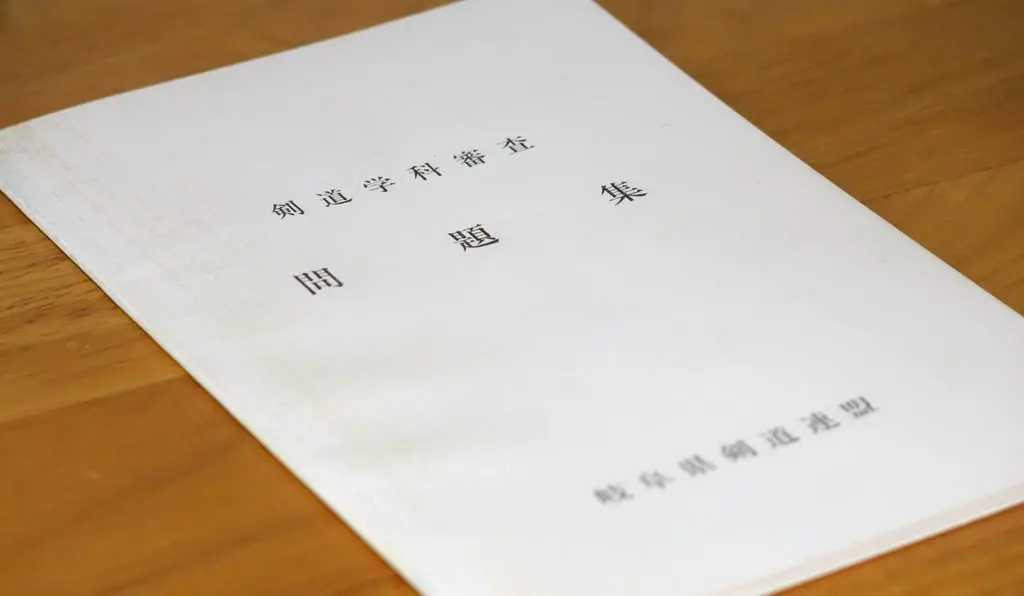
This is the book I translated. One questions is always asked, and 2 others are randomly chosen. I translated all the shodan level stuff, and after giving them the translation, I should be able to answer these questions in English. :) Also, one of the English teachers I practice kendo with said they'll let him translate my answers back to Japanese for the judges.
For the next 2 months, I need to continue to practice all this stuff, so I can pass the test. Ganbattemasu!